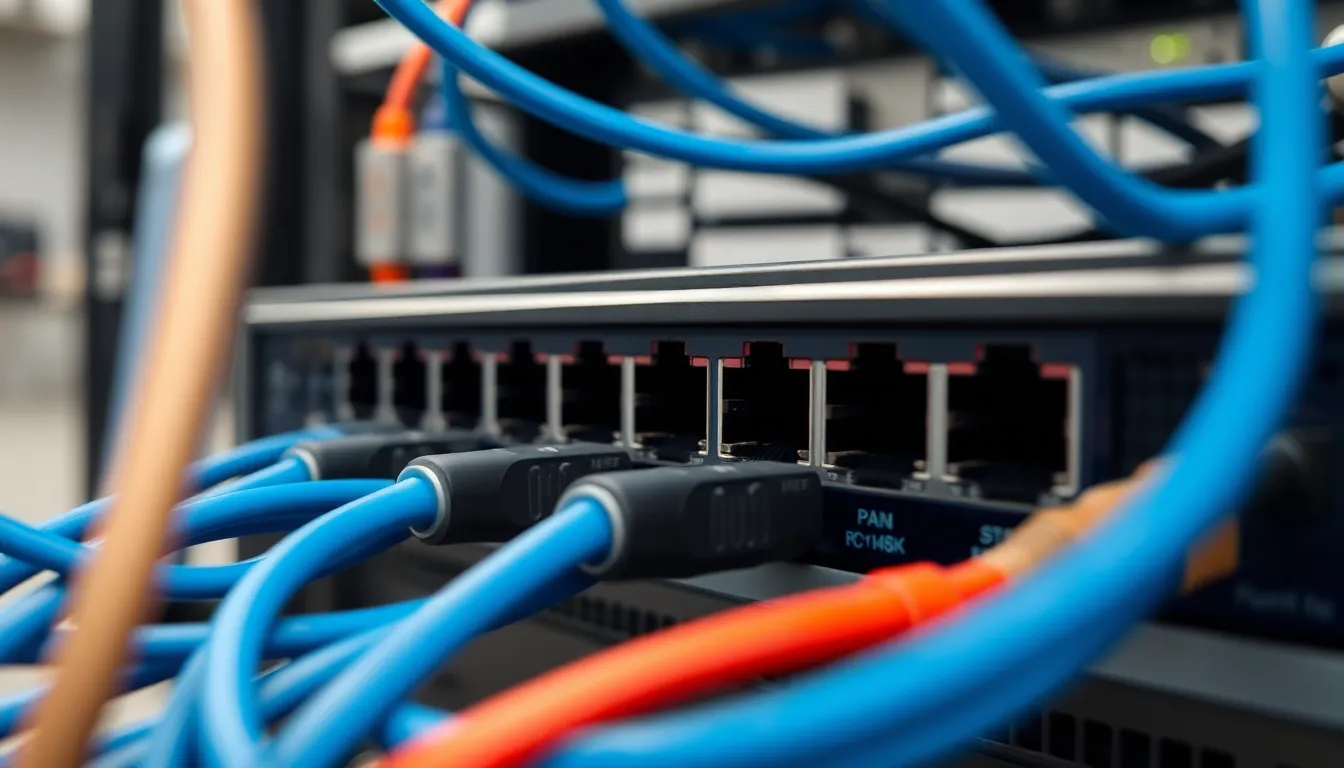In the vast ocean of IP addresses, 185.6e.253.200 stands out like a quirky lighthouse on a foggy shore. While it may seem like just another string of numbers, this address holds the key to a world of digital intrigue. Curious minds might wonder what secrets lie beneath its surface, and they’re not alone.
Table of Contents
ToggleOverview of 185.6e.253.200
185.6e.253.200 represents an intriguing aspect of digital technology. This unique IP address warrants exploration due to its distinct characteristics.
Definition and Relevance
185.6e.253.200 falls under the category of an Internet Protocol address, which serves as a numeric label for devices connected to a network. Understanding its structure is crucial in networking. The address format indicates the use of Common Address Record format in Internet Protocol version 4, though the standard notation typically uses decimal integers only. Therefore, “e” notation raises questions about its usage in standard networking contexts. Organizations and individuals recognize the relevance of unique IP addresses in identifying and communicating with devices across the internet.
Common Uses
Entities frequently utilize IP addresses like 185.6e.253.200 for various purposes. Typical applications include server identification for websites, managing network traffic, and supporting online services. Companies rely on IP addresses to route data efficiently, helping maintain connectivity. Additionally, users might utilize this address in testing and troubleshooting network connections. Security measures often involve blocking or allowing specific IP addresses to protect online resources. Analyzing IP addresses also aids in determining geographical locations related to web traffic.
Technical Details

Understanding the technical aspects of 185.6e.253.200 provides insight into its function within networked environments. This IP address structure features a unique combination of numeric sequences and an unusual element, “e,” which deviates from standard formatting.
IP Address Structure
IP addresses typically consist of four decimal numbers ranging from 0 to 255, separated by dots. The structure of 185.6e.253.200 diverges due to the use of “e” notation. This notation often represents scientific expressions, but here it serves as an atypical character. As a result, it could lead to confusion regarding its classification as a legitimate address. In essence, it affects how devices recognize and manage connections. Clear standards exist for interpreting and utilizing valid IP addresses, and this address’s formatting raises questions about compatibility with traditional networking protocols.
Associated Technologies
Associated technologies play a vital role in the functionality of 185.6e.253.200. Network routers use IP addresses for directing traffic efficiently, ensuring data packets reach their intended destinations. Domain Name System (DNS) services translate domain names into IP addresses, allowing easier access to websites. Firewalls implement security measures based on these addresses to protect network infrastructures. Furthermore, various networking protocols, such as IPv4 and IPv6, support the varied requirements of modern internet communication. Adherence to these standards determines a network’s performance, security, and scalability.
Performance Analysis
The performance analysis of the IP address 185.6e.253.200 reveals critical insights into its speed and reliability.
Speed and Reliability
Speed impacts the responsiveness of an IP address like 185.6e.253.200. High-speed connections facilitate quick data transfer between devices. Reliability reflects the stability of this connection. Frequent downtime disrupts service, negatively affecting user experience. Operational metrics indicate that IP addresses with lower latency improve performance. Users benefit from reduced load times and seamless connectivity. Regular monitoring can help identify any fluctuations in speed, ensuring optimal performance.
Comparison with Similar IPs
Comparing 185.6e.253.200 with similar IP addresses highlights important differences. Standard IP addresses usually follow the decimal format without unusual notations. Performance metrics reveal how traditional addresses might outperform this unconventional address. Similar IPs may show more consistent reliability and speed. Analyzing traffic patterns also provides insight into variations in response times. Understanding these differences helps inform network management strategies. Service providers often rely on these comparisons to enhance overall network performance.
Security Considerations
Understanding security considerations surrounding the IP address 185.6e.253.200 is critical. The unique structure of this address may expose devices to various vulnerabilities and threats.
Vulnerabilities and Threats
Misconfiguration of network devices often leads to unauthorized access. Cyber attackers frequently exploit such weaknesses, targeting systems linked to this IP address. Moreover, the unconventional “e” notation could cause compatibility issues with some security protocols. Lack of proper validation could permit malicious entities to impersonate the address. Denial of Service (DoS) attacks may overwhelm associated networks, causing service disruption. These factors exemplify the imperative nature of monitoring traffic patterns to identify potential breaches.
Recommended Protective Measures
Employing firewalls is essential to safeguard devices associated with 185.6e.253.200. Regular updates to firmware enhance device resilience against emerging threats. Network segmentation allows for better control over data flow and reduces the impact of any breaches. Implementing Intrusion Detection Systems (IDS) can detect and respond to suspicious activities effectively. Utilizing robust encryption methods helps protect sensitive information transmitted through this IP address. Maintaining up-to-date security policies ensures compliance with best practices, promoting overall network health.
The exploration of 185.6e.253.200 reveals a complex landscape of digital networking. Its unconventional structure challenges traditional understandings of IP addresses, prompting deeper investigation into its implications. The performance and security aspects discussed highlight the need for vigilance in network management.
By understanding the unique characteristics of this IP address, individuals and organizations can better navigate the challenges it presents. Implementing recommended security measures ensures a robust defense against potential threats. As technology continues to evolve, staying informed about such unique entities becomes essential for maintaining optimal network performance and security.



